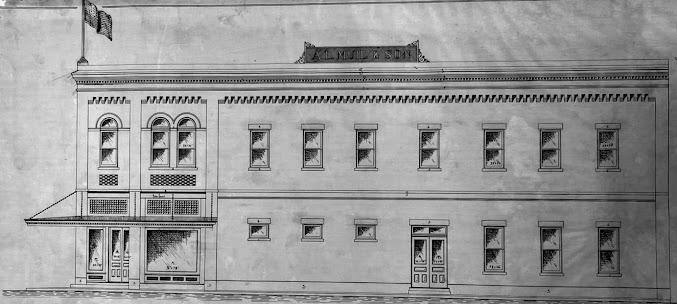Victoria architect designed San Diego's most iconic buildings
By Robert Moncada, Guest Blogger
South Texas communities are historically known for their vibrant
architecture, including banks, libraries, churches, courthouses, and many other
buildings. These structures serve as landmarks for many rural towns. For
example, in San Diego, St. Francis de Paula Catholic Church, the A. L. Muil
Building and the Hoffman Bank have stood the test for over 100 years.
Although different in their purpose, all the buildings share one thing in common: their architect.
Jules
Leffland was an architect from Denmark who gained fame and fortune throughout
Texas. He was heavily involved in South Texas development from 1886 until the
1910s. Many of his works are listed on the National Register of Historic Places
and have earned historical markers from the Texas Historical Commission.
 |
| Jules Leffland |
As his reputation grew, many
communities, including Cuero, Wharton, Beeville, Kingsville, and San Diego, commissioned
Leffland to design buildings. At the time, he was the area’s most active
architect. By 1910, Leffland had designed 80 structures, including churches,
banks, city halls, hotels, and residences across South Texas.
In San Diego, three Leffland
buildings have storied histories. All three were designed and built
within two years, 1909-1910, and still stand today. Although two of three no
longer serve their original purpose, these structures have stood the test for over
a century.
 |
| The St. Francis de Paula church still serves the congregation of San Diego and has earned a Texas historical marker. (Victoria Regional History Center, University of Houston-Victoria.) |
 |
While an architectural drawing of the Hoffman Bank was unavailable, the Charles Hoffman Block building, named for its original owner, now serves as the Duval County-San Diego Public Library.
In 1999, an exhibition at The Nave Museum in Victoria featuring Leffland’s architectural drawings opened under the title, “Architectural Drawings or Jules Carl Leffland.” In addition, the Victoria Regional History Center on campus at the University of Houston-Victoria houses many of Leffland’s original blueprints and architectural drawings.
History enthusiasts are
encouraged to view his Neoclassical Revival style drawings, including that of
the Muil Building and the St. Francis de Paula.
While today, Leffland may be but
a name on the cornerstones of buildings throughout Texas, his structures have stood the test of time. They are unique and remarkable landmarks
that genuinely capture the essence of South Texas history.
Jules Leffland died in his home in Victoria in October 1924.




Comments
Post a Comment
We welcome constructive comments and invite you to share your own research if you would like. Thank you.